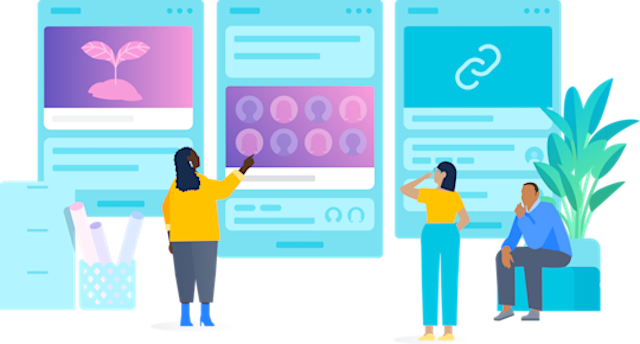Nonprofit Management
Building a Donor Retention Engine: How Nonprofits Use Software to Turn First-Time Givers into Lifelong Supporters

Acquiring a donor is only the first step in building a sustainable nonprofit. Retaining them — keeping them engaged, inspired, and loyal — is where true growth happens. The average donor retention rate hovers around 45%, meaning more than half of first-time givers never donate again. Fortunately, modern donor retention software and CRM platforms help nonprofits build deeper, data-driven relationships that turn one-time gifts into lifelong partnerships.
Why Donor Retention Matters
It costs far more to acquire a new donor than to keep an existing one. Retaining donors not only boosts revenue stability but also strengthens long-term community support. Loyal donors tend to give more frequently, increase donation sizes, and advocate for your mission.
According to the Fundraising Effectiveness Project, a 10% improvement in retention can yield up to a 200% increase in donor lifetime value. For nonprofits looking to scale sustainably, retention isn’t optional — it’s essential.
How Software Supports Donor Retention
Retention is built on connection, and technology makes that scalable. Today’s nonprofit CRMs and fundraising automation tools enable personalized outreach, behavior tracking, and predictive insights that keep donors engaged year-round.
- Centralized Donor Data: CRM systems like Bloomerang, Salesforce Nonprofit Cloud, and Neon One store giving history, communication preferences, and engagement scores in one place.
- Automated Stewardship: Schedule thank-you emails, impact reports, and donation anniversary messages automatically.
- Segmentation & Targeting: Group donors by interests, giving frequency, or donation size to tailor outreach.
- Predictive Analytics: Use AI-driven models to identify donors most likely to lapse — and re-engage them proactively.
- Campaign Tracking: Monitor which appeals, events, or communications drive repeat giving.
Stages of the Donor Retention Journey
Nonprofit software helps organizations manage each stage of the donor relationship — from the first donation to recurring giving and advocacy.
- Acquisition: Capture donor details during their first gift and sync data across your CRM and email marketing tools.
- Onboarding: Automate personalized thank-you emails, welcome sequences, and impact updates within the first 30 days.
- Engagement: Track event participation, volunteer activity, and social engagement to tailor communications.
- Retention: Automate reactivation campaigns when giving frequency declines.
- Advocacy: Turn long-time supporters into brand ambassadors through referral or peer-to-peer fundraising programs.
Top Donor Retention Tools for Nonprofits
1. Bloomerang
Bloomerang is built around donor engagement metrics, offering real-time retention dashboards and communication automation. It emphasizes donor relationships over one-time transactions.
- Best for: Small and mid-sized nonprofits focused on stewardship
- Standout feature: Donor engagement score tracking and personalized outreach automation
2. Salesforce Nonprofit Cloud
Salesforce Nonprofit Cloud uses data analytics and AI (Einstein) to predict donor churn and personalize engagement strategies. It integrates seamlessly with fundraising and marketing automation tools.
- Best for: Large, data-driven organizations
- Standout feature: Predictive donor retention and AI-powered segmentation
3. DonorPerfect
DonorPerfect combines CRM, online giving, and communication automation features. It helps nonprofits easily set up recurring giving programs and thank-you workflows.
- Best for: Nonprofits building recurring donor programs
- Standout feature: Automated donor communications and retention tracking
4. Virtuous CRM
Virtuous CRM uses “responsive fundraising” principles — tracking every donor touchpoint and triggering personalized actions automatically. It integrates with email marketing, events, and accounting tools.
- Best for: Growth-stage nonprofits with multiple donor channels
- Standout feature: Automated donor journeys and behavior-based workflows
Best Practices for Improving Donor Retention
- Say Thank You Quickly: Acknowledge donations within 24–48 hours with personalized messages.
- Show Impact: Use visuals, stories, and reports to demonstrate how donations make a difference.
- Communicate Year-Round: Keep donors informed even when you’re not asking for money.
- Use Data to Personalize: Segment by giving frequency, interests, and donation size.
- Encourage Recurring Giving: Offer monthly donation options with automated receipts and recognition.
Measuring Retention Success
Tracking the right metrics is key to continuous improvement. Most donor management software offers built-in dashboards to monitor retention and engagement trends.
- Donor Retention Rate: Percentage of donors who gave this year and last year.
- Donor Lifetime Value (LTV): Total revenue expected from a donor over their relationship with your organization.
- Churn Rate: Percentage of donors who stopped giving during a set period.
- Average Gift Frequency: Number of gifts per donor per year.
Integrating Donor Retention with Other Systems
Retention strategies are most effective when integrated across platforms. Linking your donor CRM with accounting, marketing, and volunteer systems ensures consistent communication and accurate financial reporting.
- CRM + Email Marketing: Automate email campaigns based on giving behavior.
- CRM + Accounting: Sync donations with financial ledgers for clean reconciliation.
- CRM + Events: Track donor participation and follow up with tailored thank-yous.
Final Thoughts
Donor retention is the heartbeat of nonprofit sustainability. With the right mix of CRM tools, automation, and analytics, organizations can build a proactive retention engine that deepens relationships, drives recurring giving, and fuels mission growth. Every data point tells a story — and the best nonprofits use that story to inspire lifelong supporters.

